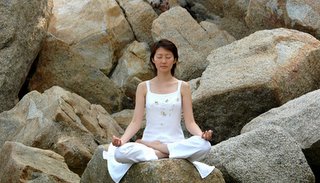When the restlessness of the mind, intellect and self is stilled through the practice of Yoga, the Yogi by the grace of the spirit within himself finds fulfillment. When the senses are stilled, when the mind is at rest, when the intellect wavers not then, say the wise, is reached the highest stage. Yoga has also been described as wisdom in work or skilful living amongst activities with harmony and moderation. Asanas (Postures) should never be practiced immediately after Pranayama (Rhythmic control of breath). If Pranayama is done first allow some time at least an hour to elapse before starting Asanas. All the ancient commentaries on Yoga have stressed that it is essential to work under the direction of Guru (Master/Teacher).
The practice of Yoga induces a primary sense of measure and proportion. Each unfulfilled area of tissue and nerve, of brain or lung, is a challenge to our will and integrity, or otherwise a source of frustration and death. Yoga is a timeless pragmatic science evolved over thousands of years dealing with the physical. moral, mental and spiritual well being of man as a whole.
Yoga for children is certainly one way to ensure that our children grow up healthy and happy. Of the many aspects of Yoga, Yama, Niyama and Asana are relevant for children. While the principles Yama and Niyama reinforce the universal values such as Truth, Non-violence, Cleanliness and contentment, The Asanas help a growing child develope physically, emotionally and psychologically. In this way Yoga is a necessary complement to formal education. By practicing this wonderful science and art children can blossom into healthy, and well balanced men and women with strong bodies, clear minds and pure hearts.

